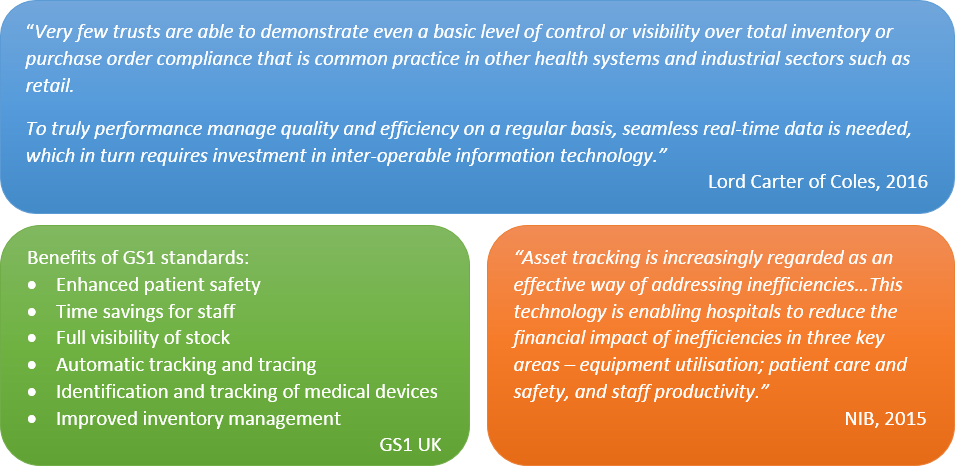#digitalhealthcare – beyond the EHR 17th February 2016
Anyone who has ever heard the three letters ‘NHS’ used together could probably recite verbatim the need to save costs, improve efficiencies, undergo transformational change…and deliver better quality patient care.
Much of the focus, albeit driven from media headlines, is on the clinical side – and quite rightly given that’s the NHS’ job. The push towards a paperless and digital healthcare system, and the billions channelled to this is ever present. ‘Patient-driven health’ and ‘EHR’ are constant buzzwords.
The latest (and previous) report by Lord Carter, Operational productivity and performance in English NHS acute hospitals: Unwarranted variations certainly highlights the need for improvements on the clinical side but also touches on the operational, or behind-the-scenes, aspects that can drive efficiencies and cost-savings. Areas such as procurement, optimising supply chain and inventory management are now seen to have a place in NHS reform. This is similarly echoed in mandates around GS1 Standards, roadmaps from the National Information Board, and the Five Year Forward View.
At Acumentive, the benefits of real-time asset locating and management is well known to us – it’s our job after all. We continually hear from Trust managers and staff that they know how important it is to be able to ‘find their stuff’ or how often high-value equipment is purchased but there’s no single source of truth as to where it actually ends up. It seems systems to overcome this were previously deemed a nice to have or beyond scope, despite the evidence showing the significant gains of improved asset visibility. Never mind the power of the data and intelligence gathered and its strategic and financial value within and across Trusts.
A recent article in the HSJ by NHS Supply Chain Scanning for savings with asset management further supports these benefits, and highlights the millions of pounds to be saved with better management of capital medical equipment and assets. This understanding and taking control of current stock, assets and equipment before even beginning to streamline eprocurement and purchasing price indexes can have significant impact on expenditure, reducing unnecessary spend in the first place on ‘misplaced’ or perceived ‘lost’ items.
And the technology is there to deliver such benefits. GS1 certified systems such as SenseAnyWare take the best fit auto-ID hardware (barcode, RFID, RTLS) and use it to generate real-time locating data. This can then be aggregated in a way that is inter-operable and displays meaningful use to multiple applications and departments within a Trust. New, cost-effective technology, such as Bluetooth Low Energy beacons, also overcome the traditional hurdles surrounding extra infrastructure and infection control.
As Lord Carter states “The best performing hospital systems around the world have real-time data at their fingertips enabling them to make decisions on a daily, weekly, monthly basis to improve performance.” The time is ripe for the NHS to understand this means looking beyond a ‘paperless EHR’ and be seen as performance leaders themselves.
